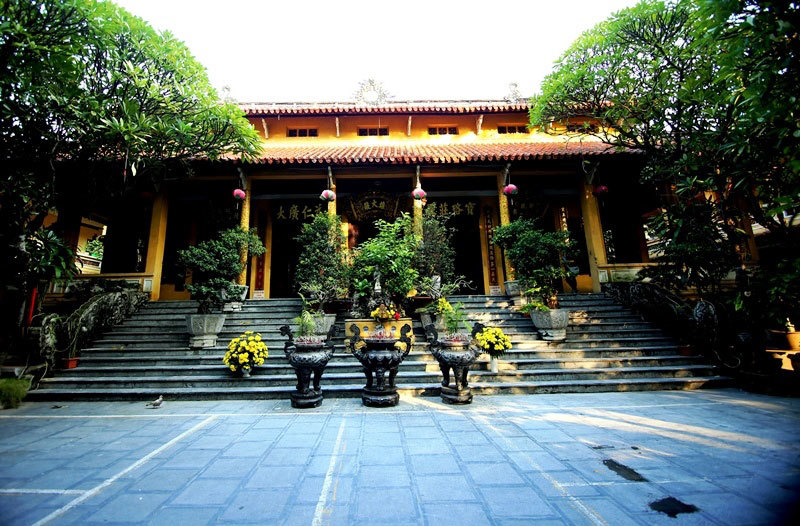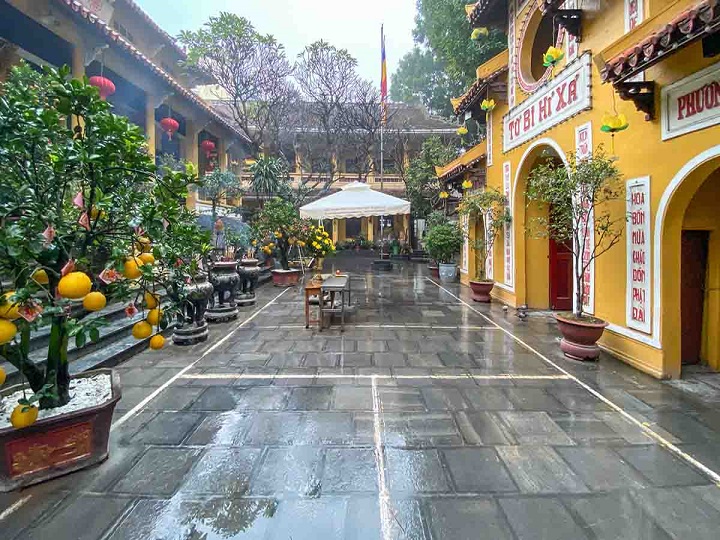Quan Su Pagoda
Overview
Quan Su Pagoda is one of the most important Buddhist temples in Hanoi, Vietnam. Located in the city center, it serves as the headquarters of the Vietnam Buddhist Sangha and is a major spiritual hub for both locals and international visitors.

History and Significance
Originally built in the 15th century under the Le Dynasty, the pagoda was constructed to receive foreign ambassadors ("quán sứ" means “ambassadors’ hall”). Over time, it evolved into a place of worship and became central to Buddhist activities in northern Vietnam. Today, it plays a crucial role in promoting Vietnamese Buddhism both domestically and abroad.
Architecture and Highlights
Quan Su Pagoda blends traditional Vietnamese temple design with modern functionality. Architectural highlights include:
-
A three-arched entrance gate and spacious front yard.
-
Main prayer hall with golden Buddha statues and intricate wood carvings.
-
Peaceful inner courtyards for meditation and prayer.
-
Stupas and relics honoring notable monks and Buddhist leaders.
-
Elegant details reflecting a blend of historical preservation and contemporary Buddhist practice.

Location and Access
The pagoda is located at 73 Quan Su Street, Hoan Kiem District, Hanoi—just a short walk from the Old Quarter. It is easily accessible by taxi, bike, or on foot from many popular tourist spots.
Cultural and Spiritual Importance
As the spiritual headquarters of Vietnamese Buddhism, Quan Su Pagoda hosts major ceremonies, Buddhist education programs, and international delegations. It’s a tranquil place for reflection amidst the bustle of Hanoi, attracting both devout followers and curious travelers seeking cultural understanding and peace of mind.

